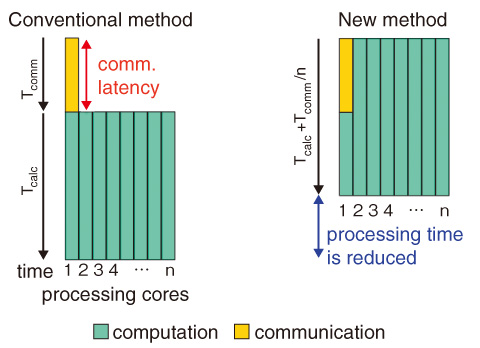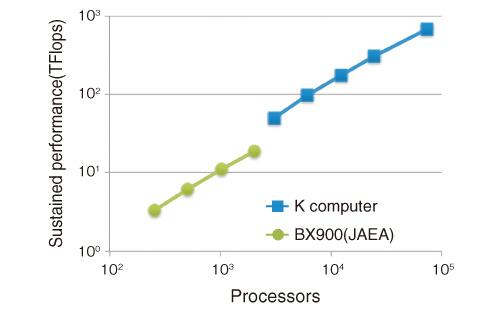
Fig.11-6 Scheduling computation and communication tasks on a processor with n processing cores

Fig.11-7 Computational performance (TFlops = 1012 operations per second) of fusion plasma simulations on the BX900 (JAEA) and the K computer
Predicting plasma turbulence is a key issue in estimating the performance of fusion core plasmas in ITER, which is determined by turbulent transport phenomena. A calculation model of fusion plasmas is described in five-dimensional (5D) phase space (three-dimensional position×two-dimensional velocity), which is estimated as requiring 3003×128×32 ~ 1011 grids for existing devices such as the JT-60U. The development of modern parallel computers enabled large-scale turbulence simulations of the 5D problem, and computational plasma turbulence research has been significantly advanced. However, ITER is a few times larger than existing devices, and simulating its turbulent transport requires an order of magnitude larger computational resources. Although a next-generation massively parallel computer such as the K computer is a promising solution, the latency due to data communications among ~105 processors has been a bottleneck in improving the computational performance of massively parallel simulations.
To resolve this issue, a novel communication technique that dramatically reduces the communication latency is developed. Turbulence simulations based on grids process calculation models in parallel by assigning decomposed small domains to each processor. This computational process, which requires boundary data in the neighboring domain, is normally performed after the boundary data is communicated. In the new technique, the computational performance is dramatically improved by assigning different tasks, computation and communication, to multiple processing cores on a single processor and processing them simultaneously (Fig.11-6). By applying this technique to 73728 processors on the K computer, massively parallel fusion plasma turbulence simulations were accelerated by ~35 times (Fig.11-7). This speedup enables ITER-size simulations, which were estimated to take more than a year on previous machines, to be completed in a week.
This work was supported by a Ministry of Education, Culture, Sports, Science and Technology of Japan (MEXT) grant for the HPCI Strategic Program Field No.4, “Next-Generation Industrial Innovations.”